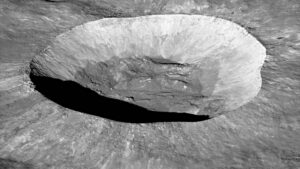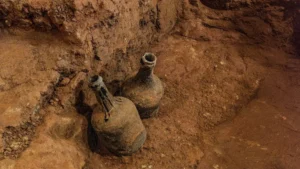A passion for the natural world drives many of our adventures. And when we’re not actually outside, we love delving into the discoveries about the places where we live and travel. Here are some of the best natural history links we’ve found this week.
Domesticated horses trace back to Western Eurasian Steppes: People have used horses for transport, farming, and warfare for centuries, but their origins have never been clear. Researchers analyzed the remains of 273 ancient horses from possible regions of horse domestication. They identified the lower Volga-Don region on the Western Eurasian Steppes as the centre from which horses spread across the world 4,200 years ago.
Who built these Mayan ruins?
Mayan ruins resemble Teotihuacan: Archaeologists have found a small plaza and temple in the Mayan capital of Tikal in Guatemala. The new discoveries resemble the ruins of La Ciudadela and the Temple of the Feathered Serpent in Teotihuacan. Since Teotihuacan conquered Tikal in the year 378, “it is almost like Teotihuacan had installed their own neighborhood or embassy in Tikal,” says archaeologist Thomas Garrison. Old maps of the sites did not show the ruins because jungle growth concealed them. Lidar mapping revealed the hidden ruins.
Major ocean current could warm greatly: The Kuroshio Current in the North Pacific Ocean is crucial to many ecosystems and the fishing industry. The northernmost corals in the world occur here, thanks to its warmth. Because of climate change and increased carbon dioxide, this current is warming three times faster than other ocean regions. Modeling shows that an extension of the Kuroshio Current is moving northward, but researchers are unsure what the repercussions this will have.

Tuskless elephants are becoming more common. Photo: Shutterstock
African elephants lose tusks to evolution: Ivory poaching in Africa has led to the evolution of tuskless elephants in many regions. Though tuskless elephants are rare, their numbers are much higher in certain places, and they are also all female. Half of the female calves born to tuskless mothers are also tuskless, while all male calves retain their tusks. In addition, two-thirds of their offspring are now female.
Hubble Space Telescope shows a star’s destruction: NASA’s Hubble Space Telescope has given astronomers an unprecedented view of a star’s demise. Previously, “we would show up after the fact and try to figure out what happened,” said Ryan Foley, University of California. The new information may give astronomers an early warning system for other stars about to go supernova.
The last two northern white rhinos
Kenyan northern white rhino retired from breeding program: Only two northern white rhinos remain in the world, and Najin is one of them. Zoologists have now retired her from a breeding program that has been trying to save the species. The last male died in 2018, and now the only two survivors are Najin and her daughter Fatu. Neither is able to carry a calf to term. Scientists harvested eggs from Najin before she was retired, and collected sperm from the last remaining male. Currently, 12 viable embryos exist. These will be implanted into surrogate southern white rhinos to try and save this species on the very verge of disappearing.

Najin and Fatu are the last remaining northern white rhinos. Photo: helpingrhinos.org
Japanese wolf is the closest relative of domestic dogs: The Japanese wolf, a subspecies of the gray wolf, became extinct in 1905, but many bone and tissue samples still exist. DNA from the Japanese wolf also occurs in an evolutionary branch of wolves that arose 20,000 to 40,000 years ago. This branch led to both Japanese wolves and domestic dogs.
Undersea volcanic eruption caused odd seismic waves: Seismometers worldwide recorded a major identified event in 2018. This confused scientists because no one actually felt the shock waves. Eventually, it became clear that volcanic activity on the seafloor off the French island of Mayotte caused the waves. The eruption is the largest ever recorded in the sea. Since the eruption of the magma chamber began, a new underwater volcano has grown to a height of 820m. The location previously showed very little elevation.






